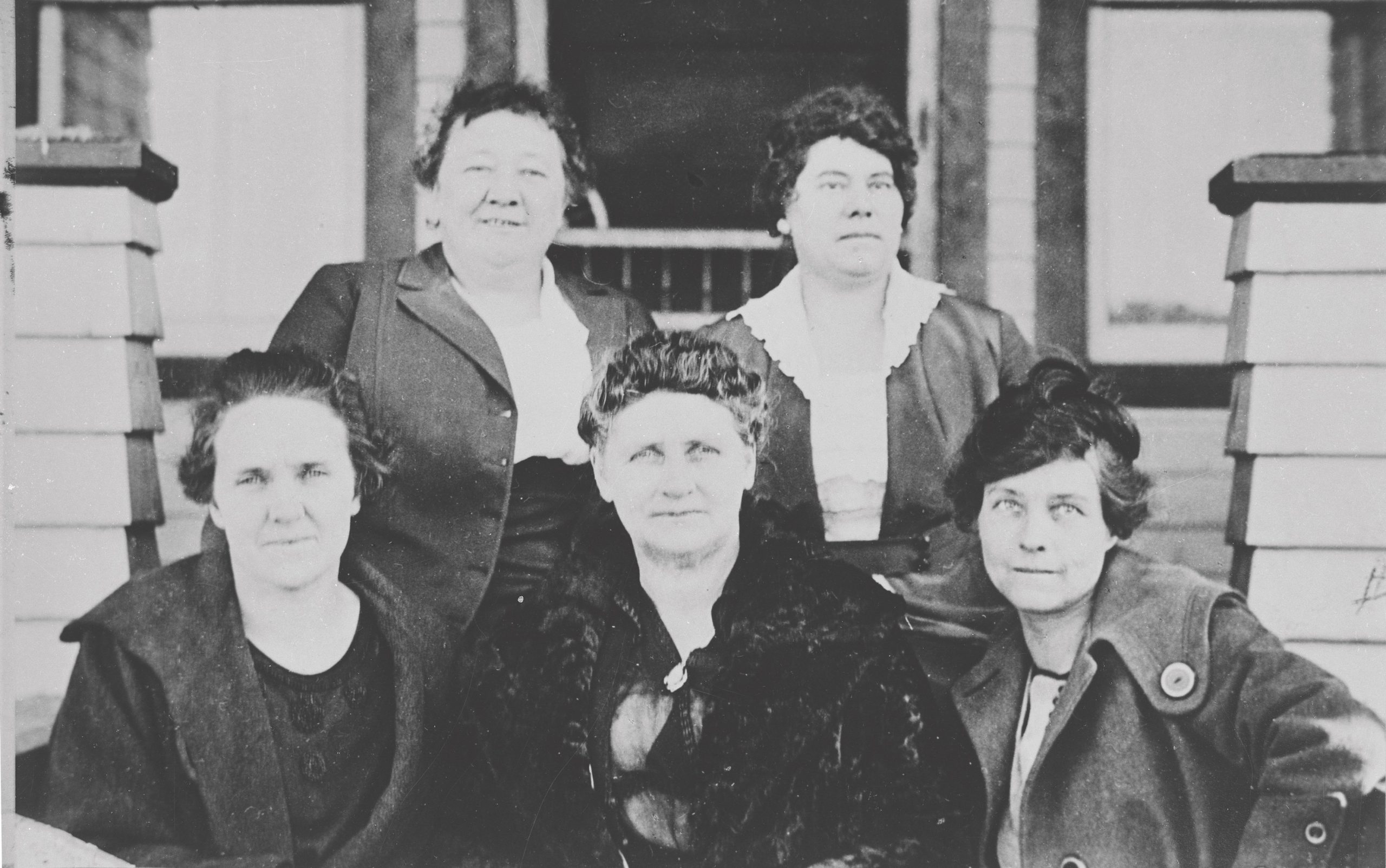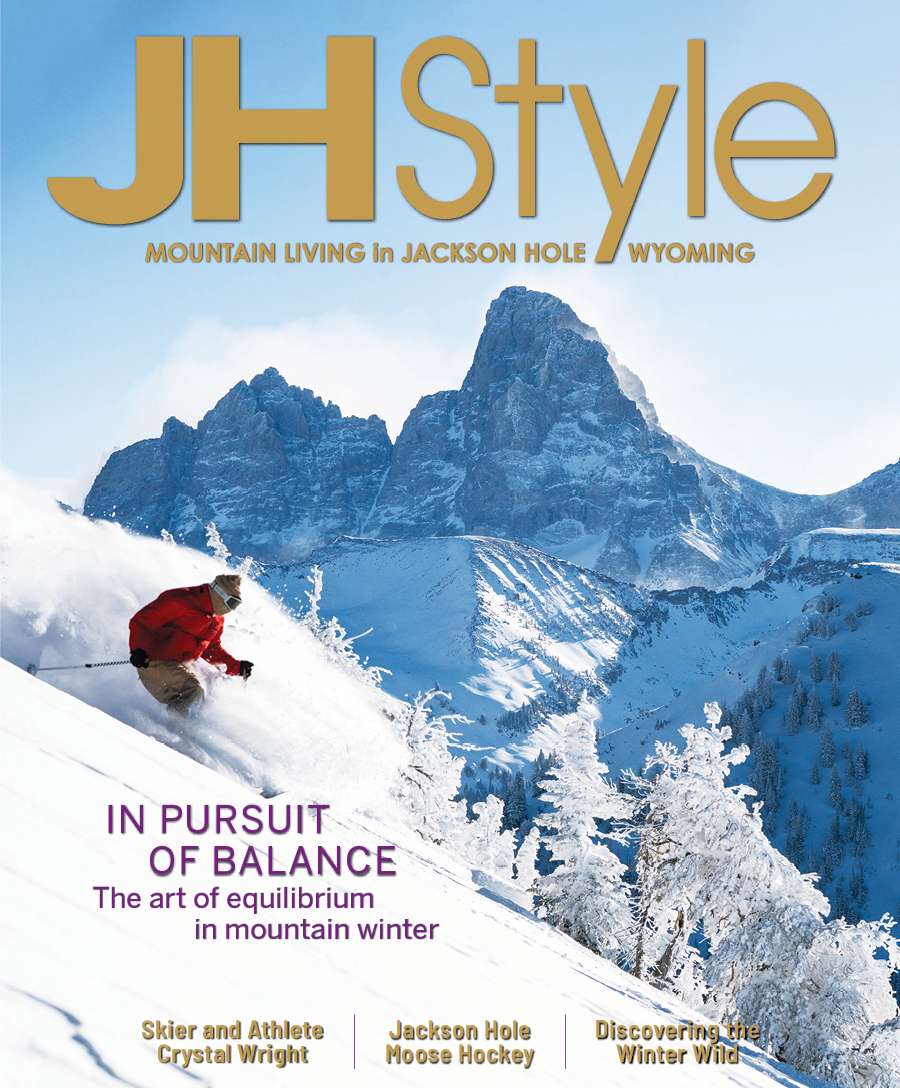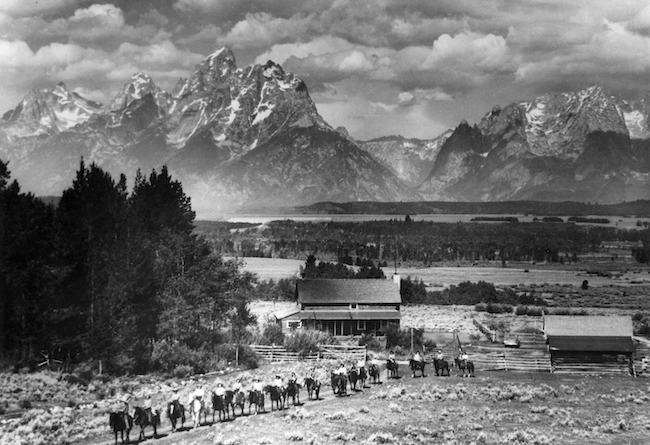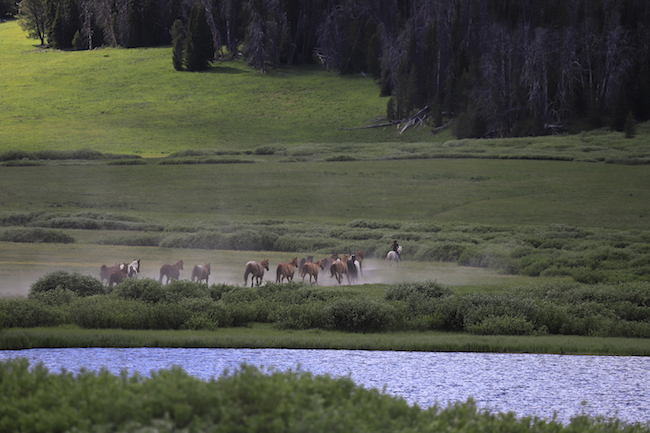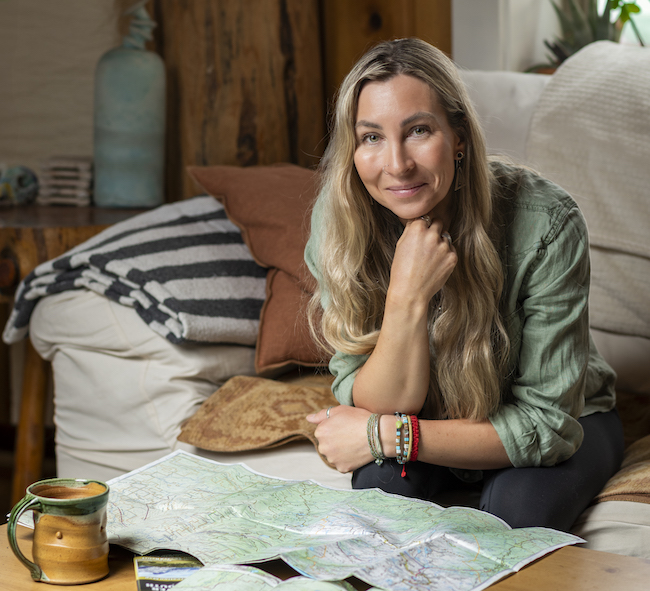Godfathers & godmothers of the Jackson Hole backcountry
30 Jan 2023
The legends who conquered the Tetons
Winter/Spring 22-23
Written By: Heather Jarvis | Images: Courtesy Collection of Jackson Hole Historical Society and Museum and Colin Samuels
When big mountain freeride films exploded onto the scene — showcasing daring feats of extreme athleticism — it inspired a new generation of skiers and riders to push the boundaries in the backcountry.
These days, student-athlete programs offer freeriding as a discipline, big mountain competitions are prevalent, and venturing out-of-bounds has become popular, but this rise into mainstream culture — until relatively recently — was in its infancy. Cue the pandemic, and the floodgates opened as more and more people turned to varying forms of backcountry outdoor recreation to combat isolated boredom. To the grumblings of many longtime backcountry skiers who long for days lost, newcomers to the sport are discovering the thrills of the wild, the challenges of the unknown. Neither of these groups of present-day enthusiasts, however, were the first to conquer these hills. We have compiled a handful of notable local mountaineers, explorers, and skiers whose feats paved the way for the rest of us — some of them well before contemporary gear and proper training were as easily accessible. To the godfathers and godmothers who triumphed over the formidable peaks of the Tetons, we salute you.1929: Glenn Exum and Paul Petzoldt
In 1929, Glenn Exum and Paul Petzoldt began climbing together in the Teton Range, partnering to form the Petzoldt-Exum School of American Mountaineering (now Exum Mountain Guides). Paul had made his first ascent of the Grand Teton in 1924 at the age of 16, and began guiding a small number of clients in 1925. Glenn, at 18 years old in 1931, was the first to climb an exposed ridge to the summit of Grand Teton solo, with no rope. The Exum Ridge, named for that ascent, is now the most popular route to the summit of Grand Teton.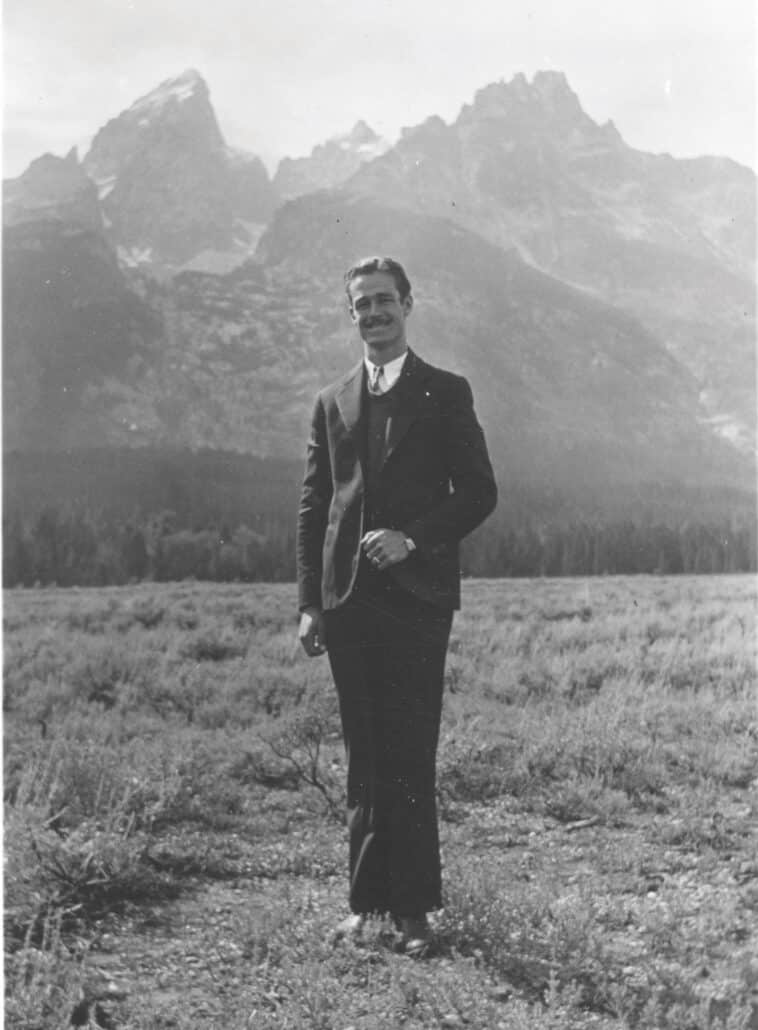
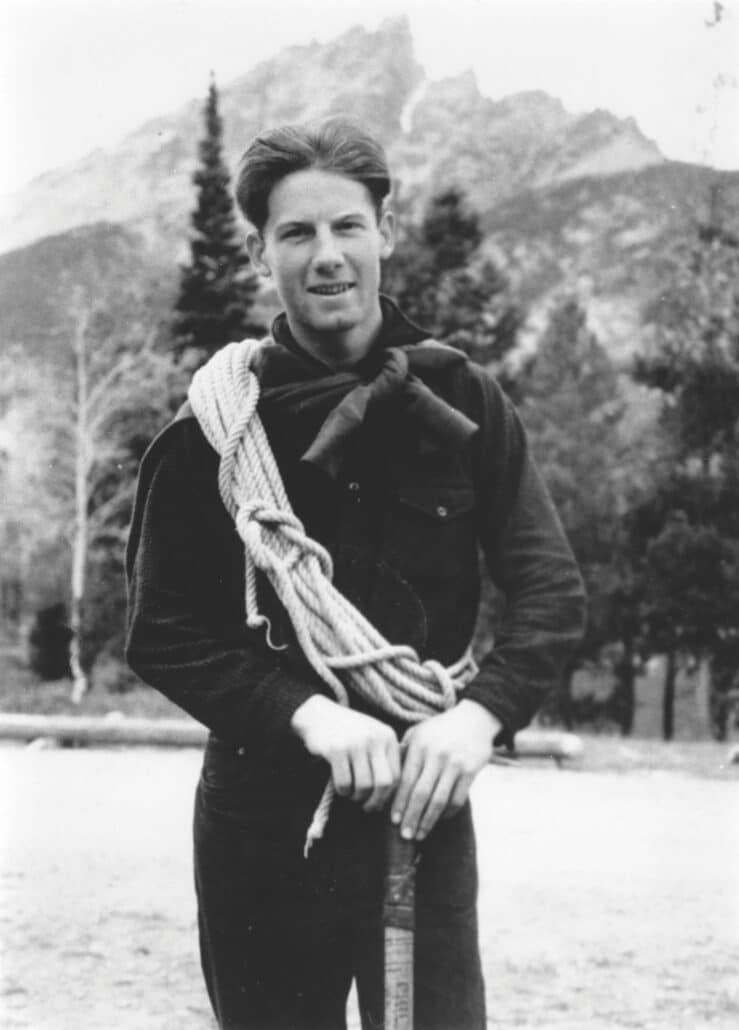 n the mid-1930s, Glenn traveled to Europe and the Alps, discovering that mountaineer guides in the area didn’t offer their patrons much instruction in climbing technique or rope handling. Instead, on any difficult sections of a climb, guides would merely pull their guests up by rope, and lower them back down on descent.
Glenn believed clients would appreciate the adventurous challenge of climbing if they could participate. When he returned, he applied that idea of instruction to the climbing school, developing the philosophy that guides should provide directive, inspire responsibility, and promote participation. Students learned proper techniques before they ever attempted a summit. Glenn and Paul guided together until 1956.
n the mid-1930s, Glenn traveled to Europe and the Alps, discovering that mountaineer guides in the area didn’t offer their patrons much instruction in climbing technique or rope handling. Instead, on any difficult sections of a climb, guides would merely pull their guests up by rope, and lower them back down on descent.
Glenn believed clients would appreciate the adventurous challenge of climbing if they could participate. When he returned, he applied that idea of instruction to the climbing school, developing the philosophy that guides should provide directive, inspire responsibility, and promote participation. Students learned proper techniques before they ever attempted a summit. Glenn and Paul guided together until 1956.
1931: Fred Brown and Allen Hanks
In 1931, Fred Brown and Allen Hanks were the first to ski in Grand Teton National Park, which was established in 1929. Allen was the chief park ranger at the time, and Fred was 16 years old.1935: Paul Petzoldt, his brother Eldon “Curly” Petzoldt, and Fred Brown
The Petzoldt brothers and Fred claim the first known winter ski descent of Rendezvous Mountain, which would later become Jackson Hole Mountain Resort. Rendezvous Bowl, a wide open slope with little trees due to elevation, is now accessible by the iconic Tram.1942: Elizabeth “Betty” Woolsey
Elizabeth Woolsey, a worldy and bold climber turned professional ski racer, made her way to Jackson Hole to live in 1942 with a group of friends. After her ski-racing career peaked in 1939 when she won the U.S. National Downhill Championship at Mount Hood, Ore., she was drawn to the promise of uncrowded slopes and light powder in Wyoming. On the first of many traverses down Teton Pass, Betty found a piece of land that she soon purchased to create Trail Creek Ranch, which continues to operate today. Betty led many patrons on summer expeditions into the wilderness, as well as guiding them safely down Teton Pass on skis in the winter. According to an article from the American Alpine Club, she “undoubtedly holds the record for the number of runs made on Teton Pass, a record unlikely to be broken.” Eventually the ranch was expanded to 270 acres, and upon her death in 1997, she had the ranch placed in a conservation easement with the Jackson Hole Land Trust to protect it from development of any kind.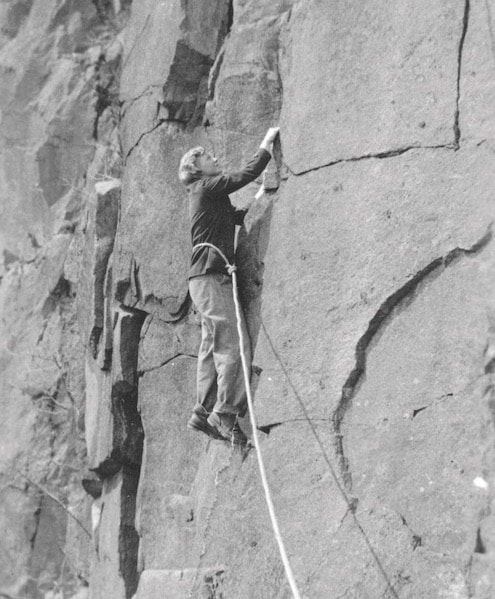
1971: Bill Briggs
In June of 1971, Bill Briggs made the first ski descent of the Grand Teton, putting him on the map as the father of extreme skiing in North America. It was a remarkable feat on wooden planks, in a time well before big mountain skiing became well-documented endeavors. As a guide with Exum Mountain Guides, he had climbed the route a magnitude of times in the summers, which gave him the confidence to face the combination of ice, snow, and rock to get to the 13,776-foot summit. In an interview with Outside Magazine 50 years later, Bill says he remembers being at the top, “all ready to ski down, and thinking, ‘I’ve gotten through the hard parts, now all I have to do is ski. That’s the easy part.’” It took four more years before the next person accomplished the same feat.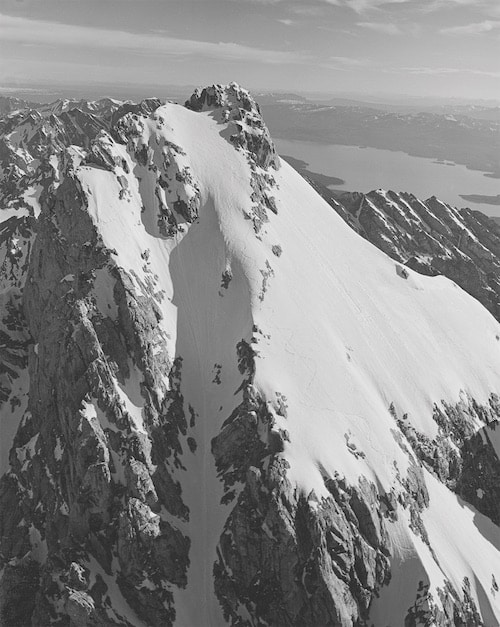
1990s: Doug & Emily Coombs
Doug Coombs is the pioneer of modern-day, big mountain extreme skiing, labeled as one of greatest adventure skiers in the world. The first person to descend some 250 slopes in Antarctica, Chile, France, Switzerland, Kyrgyzstan, Alaska and elsewhere in the U.S., Doug’s make-it-look easy domination of steep mountains has been captured in a multitude of well-known ski films. His wife, Emily, is an accomplished extreme skier in her own right, and their long list of accomplishments and contributions to the industry far outweigh what can be captured in this piece. In 1991, Doug captured the World Extreme Skiing Championship. The following year, Emily won the women’s title.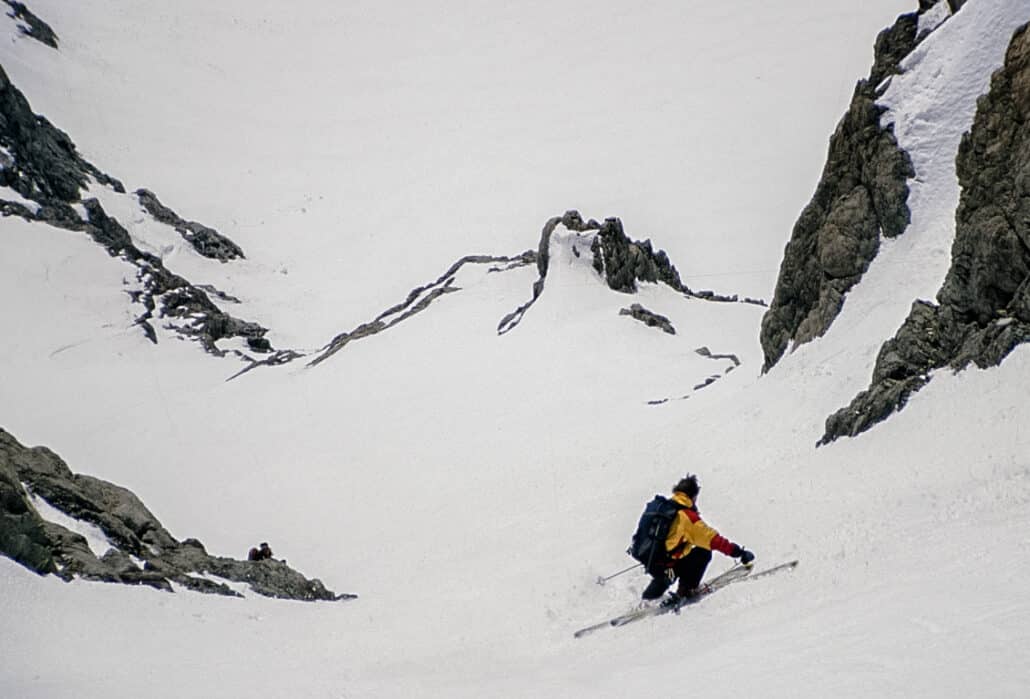 Doug won again in 1993, the same year he and Emily launched Valdez Heli Ski Guides. One of Alaska’s first guided heli-skiing operations, it transformed the state into a mecca for extreme skiing. Also in 1993, they founded the Steep Skiing Camps Worldwide in Jackson, moving it to Europe in 1997. Doug died in a skiing accident in the French Alps in 2006.
After Doug’s death, Emily created the Doug Coombs Foundation in 2012 — now called Coombs Outdoors — in order to help children in Jackson from low-income families learn how to ski. Over the years, the organization has expanded to provide more outdoor recreational opportunities to more children.
The U.S. Ski & Snowboard Hall of Fame called Doug “one of the most important skiers of his generation,” writing in his Class of 2009 tribute, “While there have been many who skied the extreme, he was the first to develop a systematic approach to safely guiding recreational skiers in big mountains.”
Doug won again in 1993, the same year he and Emily launched Valdez Heli Ski Guides. One of Alaska’s first guided heli-skiing operations, it transformed the state into a mecca for extreme skiing. Also in 1993, they founded the Steep Skiing Camps Worldwide in Jackson, moving it to Europe in 1997. Doug died in a skiing accident in the French Alps in 2006.
After Doug’s death, Emily created the Doug Coombs Foundation in 2012 — now called Coombs Outdoors — in order to help children in Jackson from low-income families learn how to ski. Over the years, the organization has expanded to provide more outdoor recreational opportunities to more children.
The U.S. Ski & Snowboard Hall of Fame called Doug “one of the most important skiers of his generation,” writing in his Class of 2009 tribute, “While there have been many who skied the extreme, he was the first to develop a systematic approach to safely guiding recreational skiers in big mountains.”

